Document
advertisement
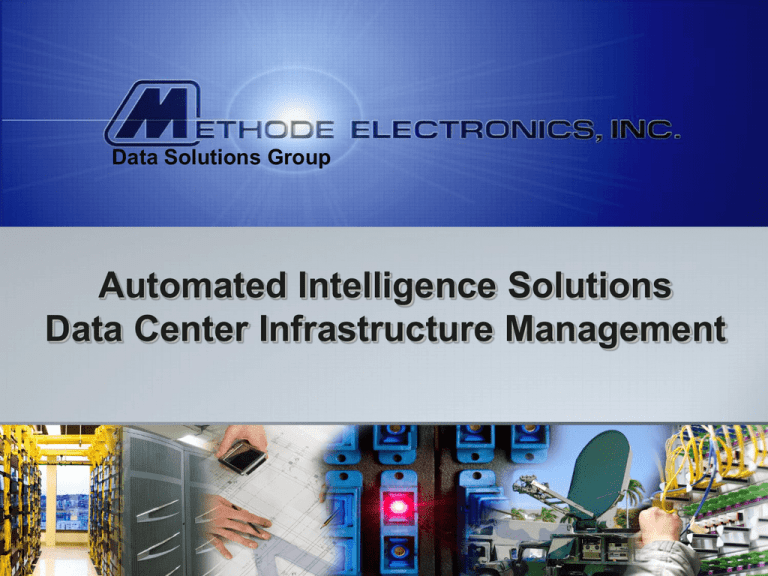
Data Solutions Group Automated Intelligence Solutions Data Center Infrastructure Management Methode is…possibilities. DCIM IS: • Data Center Infrastructure Management • A System Management Platform for the physical data center (racks / cabinets) and associated cooling, electrical, and cable infrastructure. • Key Features of DCIM • Asset Management, Equipment Monitoring, Analytics / Reporting, and Workflow integration Sources: Forrester, Gartner, Tier1 Research 2 DCIM Drivers • • • • • Power and Heat Density Consolidation Virtualization and Cloud Computing Increased reliance on critical IT systems Green IT initiatives 3 DCIM Offerings in the Market • Software Suites – integrating multiple functions • • Several focused offerings in the market today Methode DCIM Intelligence • Point Solutions – focused on single functions • • Hundreds of single point solutions Methode discrete solutions integrated to DCIM 4 packages Methode’s DCIM Intelligence Solutions • 4 Primary DCIM point solutions • • • • PowerTalk (power reporting and backup control) UTrack (nearfield asset tracking) Locktalk (networked cabinet door lock mgt) EnviroTrack (environmental monitoring) • Tied together with Methode DCIM Intelligence • Linux based for ease of development, lower barrier of entry and higher compatibility with various db engines • Integration options for numerous 3rd party software suites 5 UTrack • In-rack tracking of assets with precise rack and rack-unit location reporting • Full audit controls of installation and removal • Makes advanced use of modern RFID nearfield communications protocols • Pre or Post installation options available 6 LockTalk • On-rack electronically controlled access • Multiple access and authentication modes • • • • Methode IntuiTek Touch-based keypad Methode / Lumidigm Advanced BioMetric Methode / Southco Locking controls and electonics NOC or SOC remote management • Full audit controls to detect and analyze ingress, egress, and service time. 7 EnviroTrack • Up to 6 point temperature readings • 2 points for humidity • Air temperature, pressure, flow 8 PowerTalk • Integrated reporting of key power metrics from iPDUs • Specific brand support driven by client prioritizations • Integrated control of Methode’s Eetrex in rack battery backup solution • Pre or Post implementation operations 9 AIS DCIM Intelligence Products Integrated using Methode Electronics Components – Spring ‘12 Methode Cabinet Control Module Keypad Biometrics AIS U-Track Asset Tracking AIS Locktalk PowerTrack Monitoring & Backup EnviroTrack Temperature, Humidity, Airflow MicroContainer Package 10 AIS DCIM Intelligence Software Suite 11 AIS Software Engine Technical Specifications • AIS DCIM Master Software Engine • • • -Linux Base -Ruby on Rails Software Engine -Web UI via Flash • Server Hardware Base Requirement: • • • • • • • • • • -dedicated machine -quad-core xeon @ 2.2Ghz -4 GB RAM -1 GB NIC -3 hard drives at 10k RPM RAID 5, 6, 10 array -Each app – add 1 GB ram -Each two add-on apps – add 1 core CPU -Every 2500 asssets or 100 locks, add 250Mhz to the processor and 10mb ram -1 server can address 16 SIRIT readers -Add 15mb of ram for each SIRIT 12 Data Centers historically were designed in the absence of established standards. While TIA-568 and EN 50173 defines the parameters of LAN networks, no standards existed until ratification of TIA-942 Standards and EN 50173-5 TIA-942 and EN 50173-5 are the first standards to specifically address the DC infrastructure. Design Elements: -Cabling Design -Facility Design -Network Design TIA-942 specifically covers the following: 1. Site space and layout 2. Cabling infrastructure (Replace point-to-point) 3. Tiered reliability 4. Environmental considerations more flexible, trunk cable, … cable management ? very flexible cable management ? 1 MTP trunks for 6 channel Structured into zones Before Improper cable routing can lead to increased clutter and cable cross over at connection points causing reduced efficiency of Moves, Adds and Changes (MAC), activity and increased risk of accidental disconnection during MAC activity. Proper cable routing using vertical and horizontal cable management and hook and loop cable ties reduces clutter and will aid in not disconnecting incorrect cables during MAC activity by clearly viewing ports in panels. After Before Excess lengths of cable leads to increased clutter and cable cross over at connection points. Increased micro and macro bending resulting in light loss. Unused cables not removed from vertical and horizontal pathways add to clutter and an unkempt look to the data center. Horizontal and vertical cable managers result in a much cleaner appearance and facilitate being able to manage your Infrastructure. Lessened risk of accidental disconnection during MAC activity. After After Before 12 Ch MTP Harness Conversion Panel MTP to MTP or LC Trunks 8 Ch MTP Harness MTP / LC Pro-Slide Harnesses (MTP / mLC MTP Coupler Plate 10RU Panel to emulate the Switch or Director Blanks FEATURES Use with Brocade or Cisco Directors 6, 8, or 12 channel harness & trunk configurations Compatible with 24, 32, 48 port or 64 port blades Facilitate use with LC SFP or mSFP LC Available in LC Pro-Slide™ or mLC Pro-Slide™ Front BENEFITS Retain initial investment of fiber backbone Rear ROI by maintaining ability to adapt to technology and hardware changes 2 RU in height (The highest density, most compressed solution in the market place) Front View DCX 4S-64 Port mSFP Cabling (256 ports) Quantum Conversion Panel (2RU) DCX – 14RU Chassis with 64 mSPF Vertical Blades (512 ports) DC Cabinet w/Accordion Door Quantum Cabling Solution™ Fiber Cabling 10RU Patch Panel FAST CHANNEL™ Copper Cabling Thank you for your attention! Thomas Jaremkow
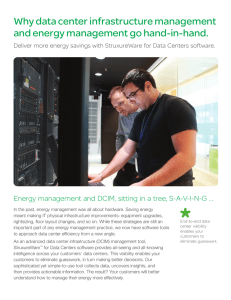
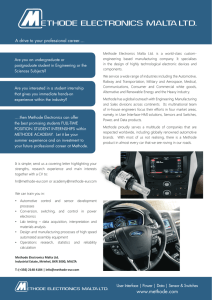
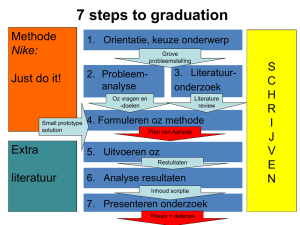
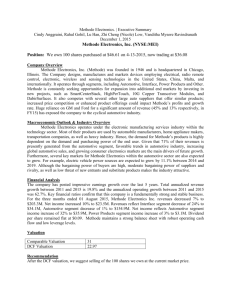
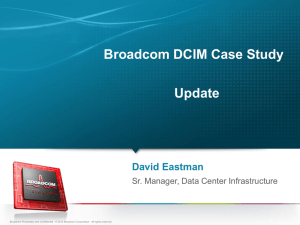



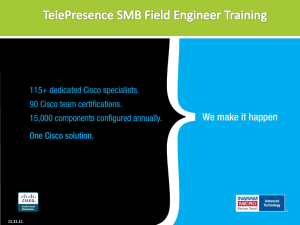
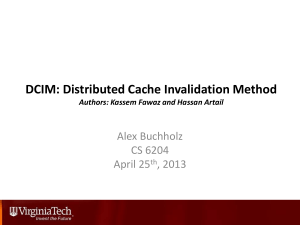
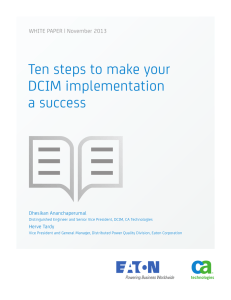
![Section [26 62 00 - StruxureWare Operations]](http://s3.studylib.net/store/data/009029558_1-c558054291d0a7a07cb87806ab45be7f-300x300.png)